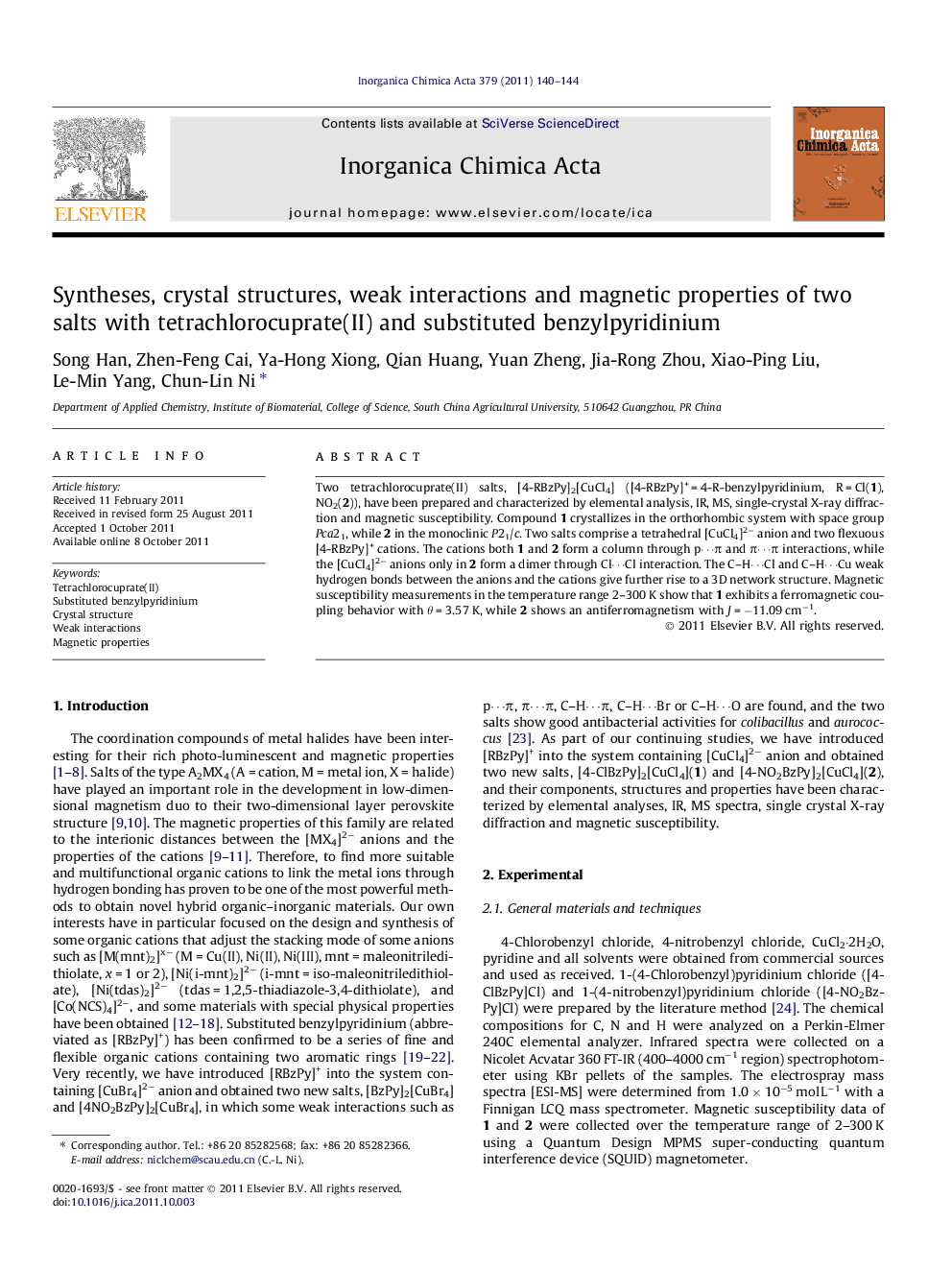| Article ID | Journal | Published Year | Pages | File Type |
|---|---|---|---|---|
| 1306167 | Inorganica Chimica Acta | 2011 | 5 Pages |
Two tetrachlorocuprate(II) salts, [4-RBzPy]2CuCl4 ([4-RBzPy]+ = 4-R-benzylpyridinium, R = Cl(1), NO2(2)), have been prepared and characterized by elemental analysis, IR, MS, single-crystal X-ray diffraction and magnetic susceptibility. Compound 1 crystallizes in the orthorhombic system with space group Pca21, while 2 in the monoclinic P21/c. Two salts comprise a tetrahedral [CuCl4]2− anion and two flexuous [4-RBzPy]+ cations. The cations both 1 and 2 form a column through p⋯π and π⋯π interactions, while the [CuCl4]2− anions only in 2 form a dimer through Cl⋯Cl interaction. The C–H⋯Cl and C–H⋯Cu weak hydrogen bonds between the anions and the cations give further rise to a 3D network structure. Magnetic susceptibility measurements in the temperature range 2–300 K show that 1 exhibits a ferromagnetic coupling behavior with θ = 3.57 K, while 2 shows an antiferromagnetism with J = −11.09 cm−1.
Graphical abstractTwo new salts, [4-ClBzPy]2[CuCl4](1) and ([4-NO2BzPy]2[CuCl4](2) ([BzPy]+ = benzylpyridinium), have been investigated. The cations both 1 and 2 form a column, while the [CuCl4]2− anions only in 2 form a dimer; and 1 exhibits a ferromagnetic coupling behavior, while 2 shows an antiferromagnetism.Figure optionsDownload full-size imageDownload as PowerPoint slideHighlights► Two tetrachlorocuprate(II) salts have been obtained. ► The substituent of the cation affects the stacking mode of the anions. ► The anions of 2 form a dimer through Cl⋯Cl interaction. ► 1 Exhibits a ferromagnetic coupling behavior with θ = 3.57 K. ► 2 Shows an antiferromagnetism with J = −11.09 cm−1.
